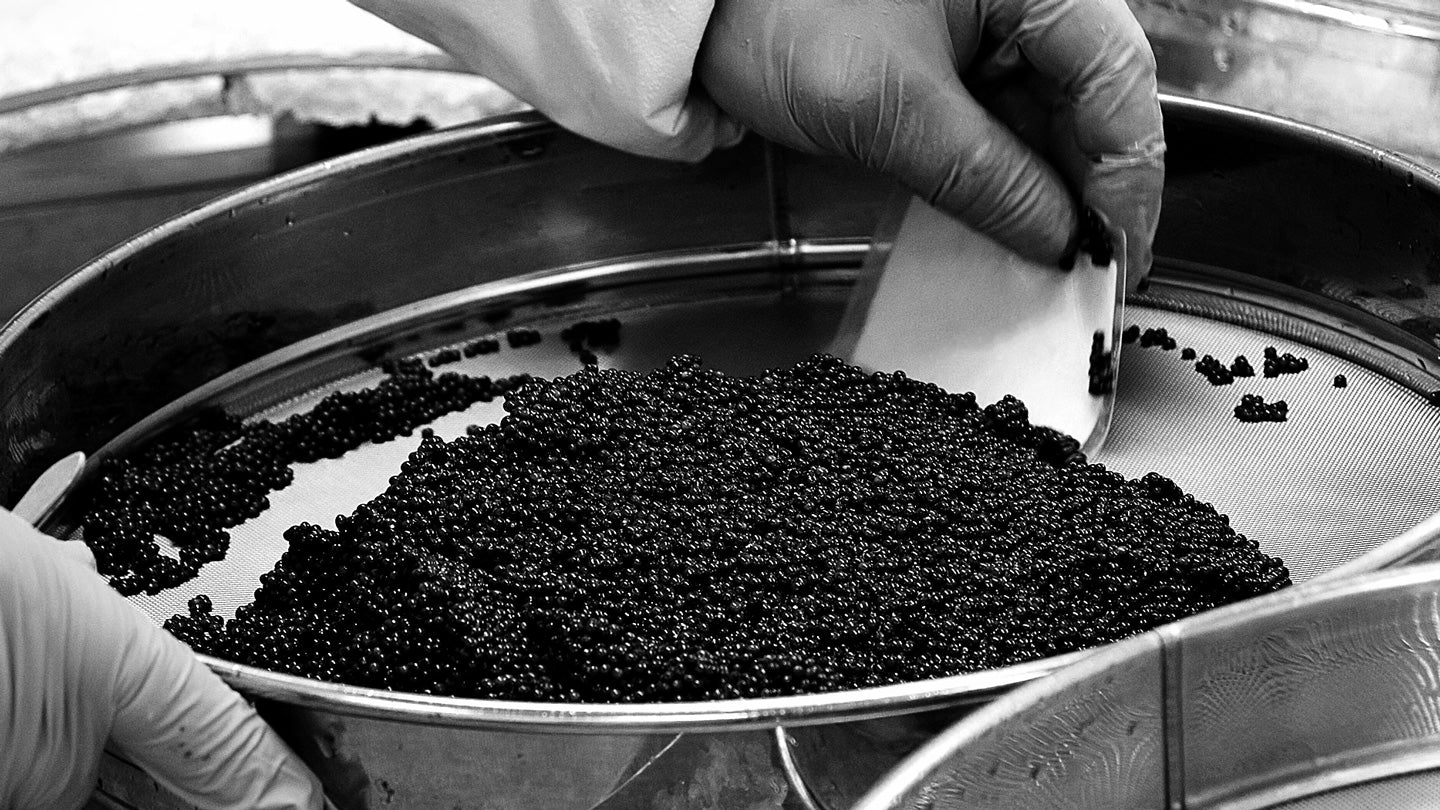Creating Caviar
The Art of Pleasure - Attilus Caviar | London, UK

Caviar making is an art, filled with traditional practices handed down through many generations of artisans. It is entirely crafted by hand, with subtle touches throughout that preserve the egg's firmness, texture, and integrity. Quality is assured by strict compliance with food safety laws and the closely-monitored CITES programme.
While caviar is processed somewhat similarly around the world, specialist producers use proprietary methods within their fishery and processing plants to create caviar of the highest quality.
Sturgeon are 'grown out' in large outdoor ponds before they are moved inside the facility as they approach an egg-bearing age. They are monitored periodically and an ultrasound scan is taken to reveal the optimum moment to extract their caviar. When they are ready, they are dispatched in a humane manner and their roe is extracted within 4-5 minutes.
Once the eggs have been sieved, washed, drained and sorted according to their size, their colour and their firmness, they are seasoned with finely measured salt to preserve and coax flavour from the caviar. Then they are vacuum-packed in to tins in combinations that match the total weight of an individual fish’s caviar yield. Caviar from separate fish is never co-mingled, and each tin is labelled with the batch code for that fish and its date of harvest. Newly packed caviar is then set aside to mature for between 2-4 weeks in a large refridgerated unit before being shipped to customers.
The basic design of caviar tins hasn’t changed in decades, and provides the optimal environment for keeping and curing the product without spoilage. Tins are packed with a high mound of eggs that are gently squeezed down with the lid, forcing the escape of air while retaining the eggs in a tight oil pack. This is principally because exposure to air can affect caviar quality enormously. A thick rubber band holds the lid and maintains its vacuum until it’s time to enjoy. Newly opened tins of caviar have an inviting, characteristic shape known to customers who relish that first bite, reflective of this superior packing method.
The tins have a very thin, food-grade coating that eliminates metallic contact with the caviar without imparting any influence of its own. We do not use glass jars at all, even for the smallest sized portions.







